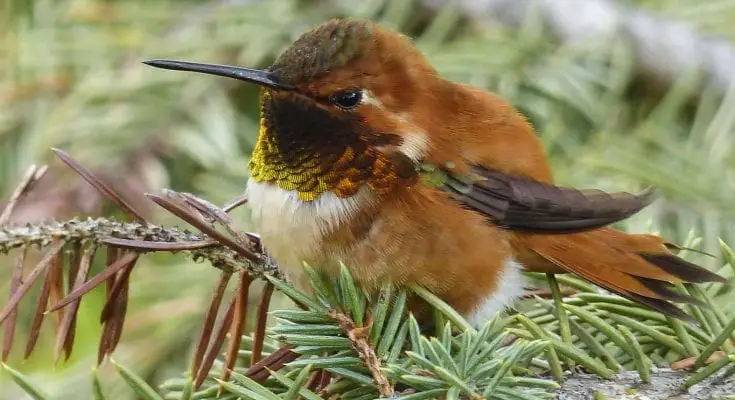1. Introduction: The Fascinating World of Animal Sleep Patterns
Sleep is a fundamental aspect of life, allowing organisms to rest, recover, and recharge. While humans spend a significant portion of their lives sleeping, the animal kingdom showcases a remarkable diversity in sleep patterns. From animals that seem to never sleep to those with minimal sleep requirements, the realm of animal sleep presents captivating mysteries. In this article, we delve into the intriguing world of animal sleep, exploring the various sleep patterns found across different species and shedding light on the animals that defy traditional notions of sleep. Our journey will take us from the depths of the oceans to the skies above, uncovering the secrets of those creatures that seem to be forever awake.
1. Introduction: The Fascinating World of Animal Sleep Patterns
1.1 Understanding Animal Sleep
Sleep. We all do it, hopefully every night. But have you ever wondered about the sleep patterns of other creatures that inhabit our planet? It turns out that animals have some pretty interesting sleeping habits that are far from a simple “eight hours a night” routine. From power nappers to creatures that never seem to close their eyes, the animal kingdom is full of sleep-related wonders waiting to be explored.
1.2 Importance of Investigating Sleep Patterns
Before we dive into the wide variety of animal sleep patterns, it’s worth asking ourselves why it even matters. Well, understanding how different animals sleep can provide valuable insights into the evolution and functions of sleep itself. By studying animals with unusual sleep patterns, scientists can gain a deeper understanding of the biological and environmental factors that shape our own sleep habits. Plus, let’s be honest, learning about how animals catch their Z’s is just plain fascinating!
2. Sleep in the Animal Kingdom: A Broad Perspective
2.1 Evolutionary Origins of Sleep
Sleep is a universal phenomenon in the animal kingdom, but its evolutionary origins still puzzle scientists. Why did sleep evolve in the first place? Some theories suggest that sleep is essential for conserving energy, while others propose that it plays a crucial role in memory consolidation and brain development. Whatever the reason may be, sleep has been ingrained in the fabric of animal life for millions of years.
2.2 Common Sleep Patterns Among Animals
While sleep duration and patterns vary widely across species, there are some common threads that unite the animal kingdom’s slumber habits. Many animals exhibit variations of two main sleep types: rapid eye movement (REM) sleep and non-rapid eye movement (NREM) sleep. REM sleep is often associated with dreaming and is characterized by rapid eye movements and muscle paralysis, while NREM sleep is typically a deeper, more restful state.
3. Unveiling the Unsleeping: Animals with Reduced Sleep
3.1 Animals with Reduced Sleep Cycles
While most animals follow a predictable sleep-wake cycle, some species have significantly reduced sleep requirements. For example, certain birds and marine mammals engage in unihemispheric sleep, where only one hemisphere of their brain goes to sleep at a time, allowing them to remain partially awake and vigilant. Talk about multitasking!
3.2 The Mechanisms Behind Reduced Sleep
So, what allows these sleep-deprived creatures to function with less shut-eye? Scientists believe that various adaptations in their brain structure and energy metabolism contribute to their ability to thrive on reduced sleep. From more efficient sleep cycles to enhanced sensory awareness, these animals have evolved some clever tricks to make the most of their waking hours.
4. The Sleepless Champions: Animals with Minimal Sleep Requirements
4.1 Animals with Exceptionally Low Sleep Needs
Now, get ready to be amazed because there are animals out there that have taken minimal sleep to a whole new level. Creatures like the African elephant and the giraffe can survive on as little as two hours of sleep per day. It’s like they have a never-ending supply of energy while the rest of us are reaching for our third cup of coffee!
4.2 Adaptations That Allow for Minimal Sleep
How on earth do these sleepless champions manage to get by with so little sleep? Well, it turns out that they have developed unique adaptations that help them cope. From efficient energy usage to short but deep periods of sleep, these animals have honed their sleep habits to maximize their waking potential. It’s like they’re the CEOs of the animal kingdom, constantly on the go and making the most out of every minute.
So, the next time you find yourself yearning for a few extra hours of shut-eye, just remember that in the vast world of animals, sleep is a complex and diverse phenomenon. From the power nappers to the sleepless wonders, the animal kingdom never ceases to amaze us with its remarkable adaptability and sleep patterns that put our own to shame. And who knows, maybe someday we’ll uncover the secret behind staying awake like these sleepless creatures. Until then, let’s enjoy our eight hours and dream of a world where we can slumber as soundly as a sloth.
5. The Cetacean Enigma: Sleep in Whales and Dolphins
5.1 Sleep Behavior in Whales
Whales, those majestic giants of the sea, have always fascinated us with their incredible size and mysterious ways. One of the enigmas surrounding these creatures is their sleep behavior. How do whales rest when they can’t afford to be unconscious for too long underwater?
While we humans need uninterrupted sleep to function properly, whales have devised a clever sleep strategy. They engage in what is known as unihemispheric sleep, where only one half of their brain sleeps at a time. This allows them to maintain some level of awareness and control even while catching some much-needed shut-eye.
5.2 Unique Sleep Patterns of Dolphins
Dolphins are known for their playful nature and seemingly boundless energy. But have you ever wondered when they find the time to sleep? Well, dolphins have their own quirky sleep patterns.
Similar to whales, dolphins also engage in unihemispheric sleep. However, they take it to a whole new level. Dolphins can actually keep one eye open while the other half of their brain is asleep. Talk about multitasking!
6. Sleepless in the Deep: Sleep Patterns in Marine Animals
6.1 Sleep Adaptations in Marine Creatures
Life in the ocean presents a unique set of challenges for sleep. Marine animals have adapted fascinating sleep strategies to cope with their underwater habitats. For instance, some species of fish have special adaptations that allow them to sleep while still swimming, using buoyancy to stay afloat.
Other creatures, like certain species of crustaceans, have evolved a state called “resting” rather than true sleep. During this resting period, they reduce their activity and metabolic rate, conserving energy while still maintaining awareness of their surroundings.
6.2 Challenges of Sleeping Underwater
Sleeping underwater is no easy feat. Besides having to breathe, marine animals must contend with the constant motion and potential dangers of their environment. Finding a safe place to sleep can be quite the challenge, especially for smaller creatures that might become someone else’s snack if they let their guard down.
Additionally, the need to surface for air adds another layer of complexity to sleep. Some marine mammals, like seals and sea lions, have found a clever solution by resting on land or ice, allowing them to sleep peacefully without the need to come up for air.
7. Nature’s Insomniacs: Animals That Can Go Days Without Sleep
7.1 Animals with Extended Wakefulness
While most animals need their beauty sleep, there are some fascinating exceptions in the animal kingdom. Certain animals can go days, or even weeks, without sleep. Take the alpine swift, for example. These birds can stay awake for up to 200 days during migration, continuously flying without showing any signs of sleep deprivation.
Other creatures with extended wakefulness include some species of bats, which manage to survive on just a few minutes of sleep per day, and certain insects that seem to push the boundaries of sleep deprivation.
7.2 Strategies to Cope with Sleep Deprivation
Animals that can go without sleep have developed various strategies to cope with the lack of rest. Some rely on short bursts of sleep, micro-napping throughout the day to recharge their batteries. Others have enhanced energy-conserving mechanisms or possess unique physiological adaptations that allow them to function normally even without sleep.
But let’s not get too envious of these sleep-deprived animals. While they may seem superhuman in their ability to stay awake, the truth is that sleep plays a vital role in maintaining overall health and well-being. So, let’s appreciate the benefits of a good snooze.
8. Conclusion: Exploring the Mysteries of Sleeplessness in the Animal Kingdom
Sleep, or the lack thereof, is a fascinating topic in the animal kingdom. From the unihemispheric sleep of whales and dolphins to the unique sleep adaptations of marine creatures, and the astonishing ability of some animals to go without sleep, nature never ceases to amaze us.
While we may still have much to learn about the mysteries of sleeplessness in the animal kingdom, one thing is clear: sleep is a fundamental aspect of life, even if some animals can get by with less of it. So, the next time you find yourself tossing and turning, just remember, you’re not alone in the quest for a good night’s sleep.
8. Conclusion: Exploring the Mysteries of Sleeplessness in the Animal Kingdom
As we conclude our exploration of animal sleep patterns, it becomes clear that there is still much to learn and understand about the fascinating world of sleep in the animal kingdom. From animals with reduced sleep cycles to those that can go days without sleep, nature continues to surprise us with its adaptations and mechanisms. By studying these unique sleep patterns, we not only gain insights into the biology and behavior of different species but also deepen our appreciation for the incredible diversity of life on our planet. As researchers continue to unravel the mysteries of sleeplessness in the animal kingdom, we can look forward to uncovering even more extraordinary discoveries that will reshape our understanding of sleep and its significance for all living beings.
FAQ
1. Do all animals sleep?
While sleep is a common behavior among most animals, not all species sleep in the same way. Some animals, such as marine mammals and certain birds, exhibit unique sleep patterns that differ from the typical sleep-wake cycles observed in humans and other mammals.
2. Which animal never sleeps?
No animal is known to completely forgo sleep. However, certain animals, such as the bullfrog and some species of sharks, can significantly reduce their sleep time or exhibit minimal sleep requirements, leading to the perception that they never sleep.
3. How do animals adapt to reduced sleep or sleeplessness?
Animals that have adapted to reduced sleep or extended wakefulness have developed various physiological and behavioral strategies. These may include brief periods of microsleep, unihemispheric sleep (where only one hemisphere of the brain sleeps at a time), or energy-conserving mechanisms that allow them to function efficiently with minimal sleep.
4. Is there a purpose to studying animal sleep patterns?
Studying animal sleep patterns provides valuable insights into the biology, ecology, and evolution of different species. Understanding how animals sleep, or in some cases, don’t sleep, can help us comprehend the fundamental functions and adaptations of sleep across the animal kingdom, including its role in cognition, energy conservation, and overall well-being.



